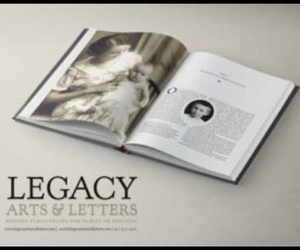What Really Happened to the Dinosaurs?
Pop quiz time! When did the dinosaurs go extinct?
A. 65 million years ago
B. 5 million years ago
C. They didn’t go extinct and if you walk outside today, you may see one.
Up until a few years ago, most people would say the first choice is the correct one. They’d say that there was a great die off of the dinosaurs 65 million years ago, and the dinosaur line ended.
Scientists from The American Museum of Natural History in New York City, however, will give you a surprisingly different answer. They say that answer “c” is correct, that there are still one kind of dinosaur around today. If you visit the Museum’s recently opened Halls of the Dinosaurs, you too will become convinced that not all dinosaurs are extinct.
The experts from the Museum make their case by how the dinosaurs exhibit is displayed. Museums in the past grouped their dinosaur exhibits so that you walked through time. That is, beginning with the earliest animals and proceeding to the most recent ones.
The current exhibit takes a different approach and groups dinosaurs according to their family trees. As you walk from exhibit to exhibit, you walk along the equivalent of the trunk and branches of the dinosaur family tree. For instance, by going through one series of alcoves, you could trace the sauropods, which include the largest animals ever to walk the land. You’d also see early examples of this kind of dinosaur, such as the Plateosaurus, as well as the last kinds before the family went extinct.
Michael J. Novacek, Senior Vice-President and Provost at the Museum, likes this approach. Grouping the dinosaurs by their family branches enables us to see relationships that weren’t obvious before. The most startling insight is that not all the dinosaurs went extinct. Most of the branches of the dinosaur family tree ended in extinction, but one branch did not.
If you walk through the branch of the dinosaur family tree devoted to the thero-pods, which includes Tyrannosaurus Rex , you’ll see a progression of increasingly bird-like creatures that continues right up to today. By the time you get to the Velociraptors, you have come to creatures more closely resembling chickens, pigeons and gulls than they resemble any of the other dinosaurs there.
Like modern birds, they have three-toed hind feet, hollow bones, and elongated arm bones that support wings. The dinosaurs in this branch appear to gradually morph into modern birds.
Birds, we now know, are part of the dinosaur family much like monkeys are part of the primate family. Next time you see a pigeon or any other bird, look at it’s legs and feet and you’ll see the scales that reveal the relationship. Birds, we now know, are feathered dinosaurs.
If you’re ever in New York, do visit the Museum and see the Halls of Dinosaurs. Ellen Futter, the Museum’s president, says the exhibits should accommodate every level of learning and attention span.
Suppose, for instance, that you are with kids and don’t have much time. “The kids,” she says, “will have an exhilarating feeling confronting these spectacular specimens, knowing that they’re real.” But if you have more time, there’s much more to see. The computerized material alone has 40 hours of information on the different dinosaurs.
The Museum is open from 10:00 a.m. to 5:45 p.m. or you can visit it on the Internet at http://www.amnh.org.
Search Blogs
Latest Posts
“Bucha”: A Film About Torture, Rape, and Other Atrocities That Regular People Can Watch
https://foreignpress.org/journalism-resources/bucha-a-film-about-torture-rape-and-other-atrocities-that-regular-people-can-watch Publication – foreignpress.org
Brushes Against Bullets
https://www.kyivpost.com/post/30040 Publication – kyivpost.com
Perdue: Russia Using Social Media to Divide, Weaken U.S.Read more: Perdue: Russia Using Social Media to Divide, Weaken U.S. | Newsmax.com
https://www.newsmax.com/world/globaltalk/facebook-troll-vpn/2024/03/25/id/1158552/ Publication – newsmax.com
Technological Advances That Could Save Lives In Ukraine
https://www.realclearmarkets.com/articles/2024/03/23/technological_advances_that_could_save_lives_in_ukraine_1019758.html Publication –realclearmarkets.com
Subscribe to Updates
About Author

Mitzi Perdue is the widow of the poultry magnate, Frank Perdue. She’s the author of How To Make Your Family Business Last and 52 Tips to Combat Human Trafficking. Contact her at www.MitziPerdue.com
All Articles
A Contrarian Investment that Could Be Just Right for You
A Contrarian Investment that Could Be Just Right for YouSuppose for a moment that you’re an investor. Not just any investor. In this case you are Peter Hughes. You are a real person, although in fact Hughes is not your real name. Here’s what’s going on with you,...
Knowledge Services: Crucial in Today’s Knowledge Economy
Knowledge Services: Crucial in Today's Knowledge EconomyIf you’re beautifully organized, you can quickly find all your documents when you need them. However, if you’re like most people, the frustration and lost time spent trying to locate a needed document can be...
A Family Book Can Be a Priceless Investment
A Family Book Can Be a Priceless InvestmentImagine something terrible for a moment. If you lost your memory, as in Alzheimer’s, you would have lost one of the most basic factors that makes you you. Without memory, you’d have trouble making good decisions; you’d no...
The Soft Issues Are Really the Hard Issues!
The Soft Issues Are Really the Hard Issues!If you’re part of a business family and you’re also a parent of a school age child, which would be easier for you to do? Be honest! Choice A: Have the Sex Talk with your child Choice B: Have the Money Talk with your child...
Trust: How to Nurture a Key Factor in Family Success
Trust: How to Nurture a Key Factor in Family SuccessTRUST: HOW TO NURTURE A KEY INGREDIENT FOR FAMILY SUCCESS What does it take to be a successful multi-generational family business? Dennis Jaffe, PhD is one of the best people to ask. For more than 40 years, he’s...
Women’s Leadership Styles: There’s a Lot to Learn!
Women's Leadership Styles: There's a Lot to Learn!Women in family businesses face a particular set of distinct challenges when it comes to leadership style. Heather Powell, a family business coach for women and couples, has an impressive track record of dealing with a...






